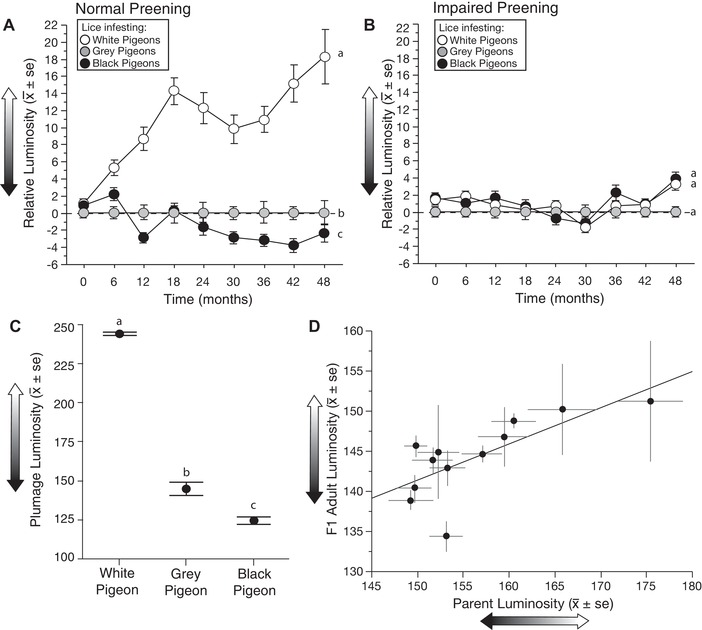Figure 3.

Evolution of feather lice (C. columbae) on different colored rock pigeons over a four‐year period (ca. 60 louse generations). (A,B) The y‐axis shows changes in the mean (±SE) luminosity (brightness) of lice on white and black rock pigeons, relative to lice on gray rock pigeon controls (set to zero). Different lower case letters indicate statistically significant differences. (A) On birds with normal preening, the relative luminosity of lice on white pigeons increased rapidly (LMM, P < 0.0001; Tables A1 and A3); the relative luminosity of lice on black pigeons decreased, but more slowly (LMM, P = 0.001; Tables A1 and A3). (B) Relative luminosity did not significantly change over time on white or black pigeons with impaired preening (LMM, P ≥ 0.34 in both cases, Tables A2 and A4). (C) Luminosity of plumage from five white, 10 gray (control), and eight black rock pigeons. The three groups differed significantly in luminosity (ANOVA df = 2,22, F = 242.6, P < 0.0001; Tukey‐Kramer post hoc tests P < 0.001 for all possible comparisons). (D) Common garden experiment showing heritability of preening‐induced changes in the color of lice evolved on different colored pigeons. The adult luminosity of parental and offspring cohorts of lice were highly correlated (linear regression: r = 0.72, df = 11, F = 11.7, P = 0.007).
